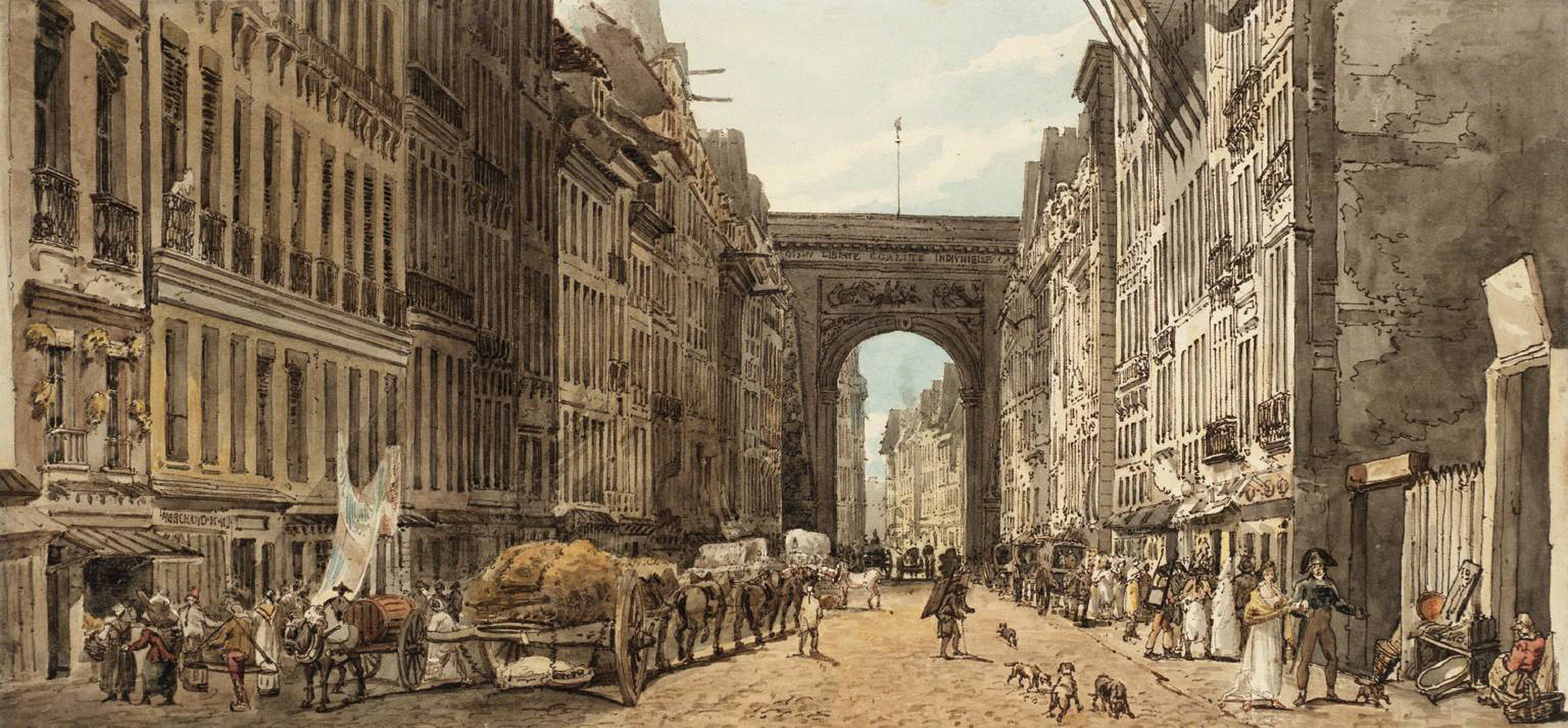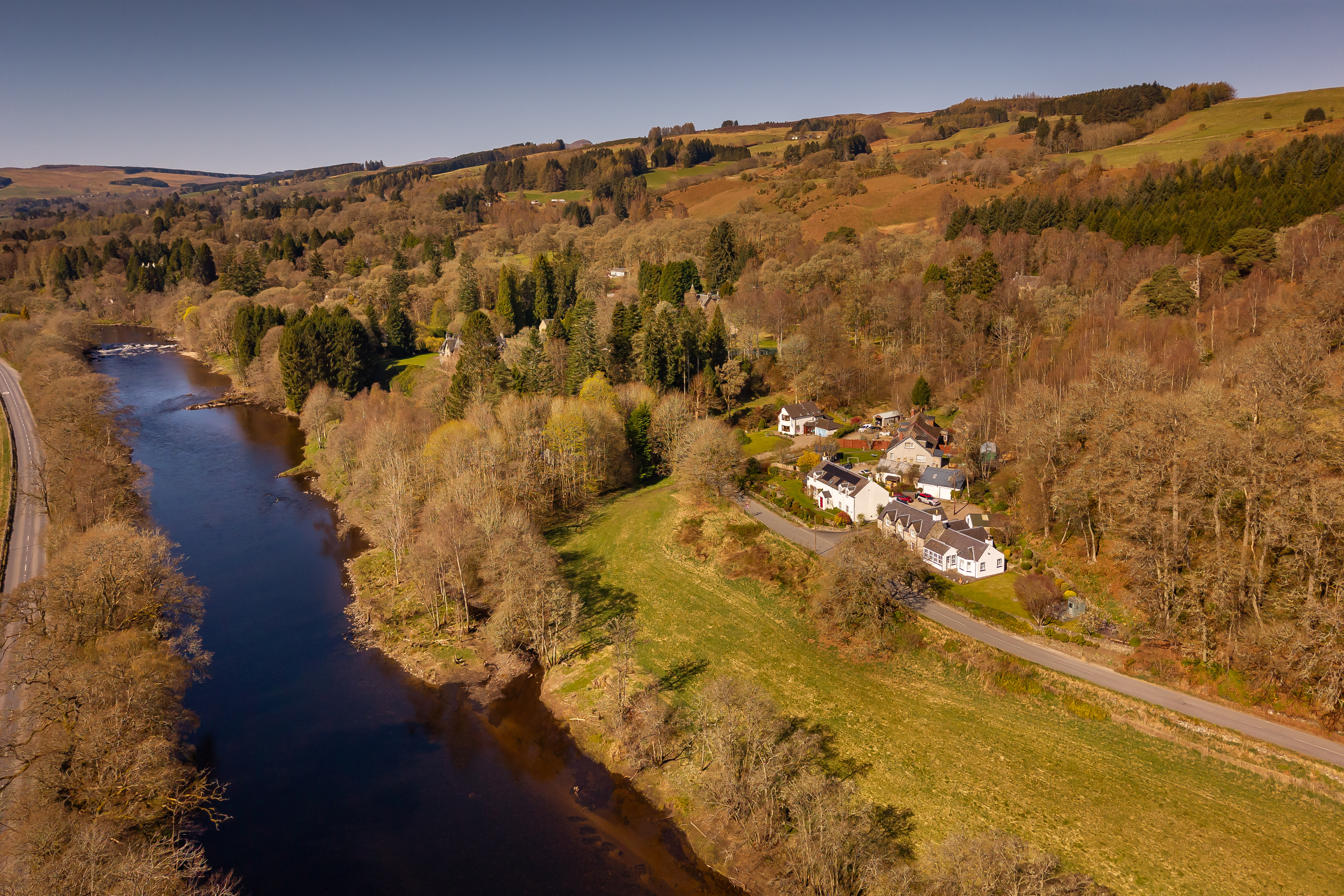My favourite painting: Sir Nicholas Bacon
As a medium, watercolour was regarded at the time as a lesser artform. This picture surely rebalances that inferiority.


La Rue St Denis, Paris, 1801–2, by Thomas Girtin (1775–1802), 9in by 19in, Private Collection
Sir Nicholas Bacon says:
I have lived with this watercolour all my life. Rue St Denis is hauntingly empty and illustrates Girtin’s remarkable skills as an architectural draughtsman. He conveys that very French style of architecture and fenestration by a boldness of delivery and yet with such a laconic touch. The result is a picture of solidarity, describing the mass of these buildings with a simplicity and yet sophistication with the briefest hint of detail—the hallmark of genius, sadly curtailed by his early death. As a medium, watercolour was regarded at the time as a lesser artform. This picture surely rebalances that inferiority.
Sir Nicholas Bacon Bt is President of the Royal Horticultural Society
John McEwen comments on La Rue St Denis:
Thomas Girtin was born in Great Bandy Leg Walk, Southwark (sadly long gone). His father was a brushmaker. This artisan background was common among his artistic contemporaries, not least his friend turner, also a Londoner and two months his junior.
Their careers entwined. they probably met as boys when colouring prints for the publisher John Raphael Smith. Both were apprenticed to topographical watercolorists/engravers—Edward Dayes (Girtin), Thomas Malton (Turner)— and both were early commissioned by ‘Beau’ Lascelles to paint at Harewood.
However, considering Girtin, as a cornerstone of the British school and leading innovator of watercolour and romantic landscape painting, is regarded as the equal of turner, details of his life, even taking into account his death at 27 from asthma, are surprisingly thin. only two letters survive and not a single oil painting, despite this becoming his preferred medium.
One major post-1800 project was the 18ft by 108ft Eidometropolis (since lost), a panoramic oil painting of London opened as a spectacle for the fee-paying public shortly before he died.
Sign up for the Country Life Newsletter
Exquisite houses, the beauty of Nature, and how to get the most from your life, straight to your inbox.
He also produced around that time some watercolours of Paris, which he was one of the first to visit after the peace of Amiens, published as a set of aquatint etchings, titled Twenty Views of Paris and the Environs, shortly after his death. Both projects were intended to free the artist from traditional dependence on private patrons.
The engraving of this watercolour lacks its stark grandeur—Girtin has filled the street with people, ‘stories’ to encourage sales. ‘If Tom had lived, I should have starved,’ said Turner,who attended Girtin’s funeral. The compliment is hearsay, but its generosity has the ring of truth, especially in the majestic context of a masterpiece like this.
Country Life is unlike any other magazine: the only glossy weekly on the newsstand and the only magazine that has been guest-edited by HRH The King not once, but twice. It is a celebration of modern rural life and all its diverse joys and pleasures — that was first published in Queen Victoria's Diamond Jubilee year. Our eclectic mixture of witty and informative content — from the most up-to-date property news and commentary and a coveted glimpse inside some of the UK's best houses and gardens, to gardening, the arts and interior design, written by experts in their field — still cannot be found in print or online, anywhere else.
-
 Vertigo at Victoria Falls, a sunset surrounded by lions and swimming in the Nile: A journey from Cape Town to Cairo
Vertigo at Victoria Falls, a sunset surrounded by lions and swimming in the Nile: A journey from Cape Town to CairoWhy do we travel and who inspires us to do so? Chris Wallace went in search of answers on his own epic journey the length of Africa.
By Christopher Wallace
-
 A gorgeous Scottish cottage with contemporary interiors on the bonny banks of the River Tay
A gorgeous Scottish cottage with contemporary interiors on the bonny banks of the River TayCarnliath on the edge of Strathtay is a delightful family home set in sensational scenery.
By James Fisher
-
 'As a child I wanted to snuggle up with the dogs and be part of it': Alexia Robinson chooses her favourite painting
'As a child I wanted to snuggle up with the dogs and be part of it': Alexia Robinson chooses her favourite paintingAlexia Robinson, founder of Love British Food, chooses an Edwin Landseer classic.
By Charlotte Mullins
-
 The Pre-Raphaelite painter who swapped 'willowy, nubile women' for stained glass — and created some of the best examples in Britain
The Pre-Raphaelite painter who swapped 'willowy, nubile women' for stained glass — and created some of the best examples in BritainThe painter Edward Burne-Jones turned from paint to glass for much of his career. James Hughes, director of the Victorian Society, chooses a glass masterpiece by Burne-Jones as his favourite 'painting'.
By Charlotte Mullins
-
 'I can’t look away. I’m captivated': The painter who takes years over each portrait, with the only guarantee being that it won't look like the subject
'I can’t look away. I’m captivated': The painter who takes years over each portrait, with the only guarantee being that it won't look like the subjectFor Country Life's My Favourite Painting slot, the writer Emily Howes chooses a work by a daring and challenging artist: Frank Auerbach.
By Toby Keel
-
 My Favourite Painting: Rob Houchen
My Favourite Painting: Rob HouchenThe actor Rob Houchen chooses a bold and challenging Egon Schiele work.
By Charlotte Mullins
-
 My Favourite Painting: Jeremy Clarkson
My Favourite Painting: Jeremy Clarkson'That's why this is my favourite painting. Because it invites you to imagine'
By Charlotte Mullins
-
 The chair of the National Gallery names his favourite from among the 2,300 masterpieces — and it will come as a bit of a shock
The chair of the National Gallery names his favourite from among the 2,300 masterpieces — and it will come as a bit of a shockAs the National Gallery turns 200, the chair of its board of trustees, John Booth, chooses his favourite painting.
By Toby Keel
-
 'A wonderful reminder of what the countryside could and should be': The 200-year-old watercolour of a world fast disappearing
'A wonderful reminder of what the countryside could and should be': The 200-year-old watercolour of a world fast disappearingChristopher Price of the Rare Breed Survival Trust on the bucolic beauty of The Magic Apple Tree by Samuel Palmer, which he nominates as his favourite painting.
By Charlotte Mullins
-
 My favourite painting: Andrew Graham-Dixon
My favourite painting: Andrew Graham-Dixon'Lesson Number One: it’s the pictures that baffle and tantalise you that stay in the mind forever .'
By Country Life